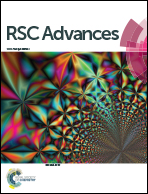Interface chemistry and leakage current mechanism of HfGdON/Ge gate stack modulated by ALD-driven interlayer
Abstract
In current manuscript, a Ge metal-oxide-semiconductor (MOS) capacitor based on HfGdON/Ge gate stacks with an ALD-driven passivation layer has been fabricated, and its interfacial and electrical properties are compared with those of its counterparts that have not undergone passivation treatment. Electrical analyses revealed that the HfGdON/Al2O3/Ge MOS device exhibits improved performance, including larger permittivity, negligible hysteresis, reduced flat band voltage, good capacitance–voltage behavior, and lower interface state and border trapped oxide charge density. All of these improvements can be ascribed to the suppressed growth of unstable Ge oxides, thus reducing the defective states at or near the HfGdON/Ge interface and improving the interface quality. In addition, detailed analyses of the current conduction mechanisms (CCMs) for Ge MOS capacitors with different passivation treatment were investigated systematically.



 Please wait while we load your content...
Please wait while we load your content...